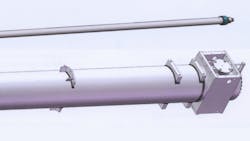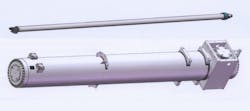Custom Hydraulic Cylinders
Engineered large bore hydraulic cylinders are custom designed and manufactured and available in bore sizes from 10 to 26 in. with strokes to 420 in. They are rated for pressures to 10,000 psi. Custom rod coatings include chrome, nickel-chrome, stainless steel, and laser cladding. They can be built to ASTM, ISO, NIST, ABSAWS, API, DNV, SAE, ANSI, SAE, and AISI specifications. Design process includes modeling and testing, such as finite element analysis, magnetic particle, ultrasonic and X-ray, as well as 100% traceability on all critical components. Cylinders come with test, oil cleanliness, material, and weld certifications.
Seabee, a Ligon Co., (641) 456-4871, www.seabeecylinders.com


